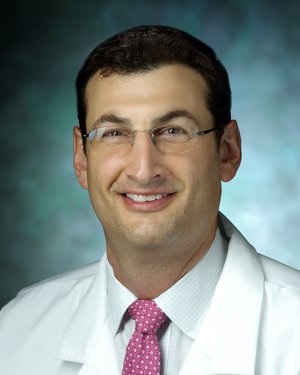-
Richard J. Battafarano, MD PhD

- Regional Director of General Thoracic Surgery
- Associate Professor of Surgery
The Johns Hopkins Complex Airway Clinic is a multidisciplinary program for adults experiencing airway disorders caused by prolonged intubation or tracheostomy.
Explore On This Page:
Schedule An Appointment
Schedule by phone
Schedule online through MyChart
Conditions We Treat
Laryngotracheal Stenosis
Subglottic Stenosis
Glottic Stenosis
Treatment of Complex Airway Disorders – FAQs
Otolaryngologist Alexander Hillel, M.D., director of the Johns Hopkins Complex Airway Clinic, discusses complex airway disorders (layngotracheal stenosis), how to get a correct diagnosis and what treatment options are available depending on the severity of the disease.
Our Approach
Our approach to Laryngotracheal Stenosis
Following your diagnosis, the multidisciplinary team of the Complex Airway Clinic may discuss the following treatments with you:
- Endoscopic excision and dilation: the removal of tissue and opening of the airway without making any external incisions.
- Endoscopic placement of a tracheal stent: the placement of a stent in the windpipe (trachea) to hold the airway open.
- Cricotracheal/tracheal resection: removal of the damaged part of the windpipe (trachea).
- Endoscopic laryngotracheoplasty (Maddern procedure): reconstruction of the upper airway.
Our approach to Glottic Stenosis
We may discuss the following treatments for glottic stenosis (narrowing at the vocal cords) include:
- Laser cordotomy: laser incision made in paralyzed vocal cords to allow greater airflow.
- Partial arytenoidectomy: partial removal of the areytenoid cartilage located around the vocal cords.
- Open-airway surgery of the larynx, including posterior cricoid split with rib graft: surgical opening of the airway using a graft of rib cartilage to support the opening.
Meet Our Specialists
Our team of multidisciplinary experts specializes in the treatment of airway disorders.



